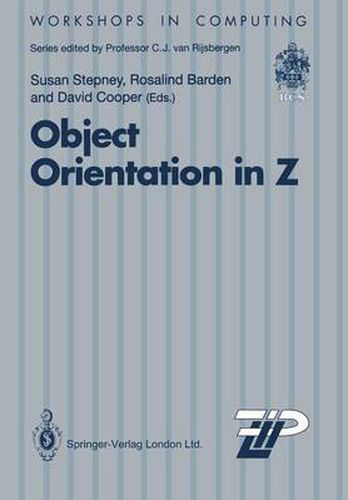Readings Newsletter
Become a Readings Member to make your shopping experience even easier.
Sign in or sign up for free!
You’re not far away from qualifying for FREE standard shipping within Australia
You’ve qualified for FREE standard shipping within Australia
The cart is loading…






This title is printed to order. This book may have been self-published. If so, we cannot guarantee the quality of the content. In the main most books will have gone through the editing process however some may not. We therefore suggest that you be aware of this before ordering this book. If in doubt check either the author or publisher’s details as we are unable to accept any returns unless they are faulty. Please contact us if you have any questions.
Z is currently one of the more popular formal specification languages. Practical experience has shown, however, that the Z schema is insufficient to support the structuring of large specifications, and many attempts have been made to develop adequate extensions to it. One of the most promising avenues of research is the use of object orientation technology, which has great potential as a means of structuring large, complex software systems. This volume contains a collection of papers investigating different approaches for providing Z with an object oriented structuring mechanism. It evolved from a comparative study of ways in which object orientation has been combined with Z, which was carried out as part of the DTI/IED-funded ZIP Project. As a result of interest generated by the study last year at both the ZOOM Workshop in Oxford and the 6th Annual Z User Meeting in New York, it was revised and expanded into its present form. In each chapter a different approach is described and assessed. Among topics covered are: why an object oriented Z?; example specifications in Z; Hall’s style; Z expression of refinable objects; MooZ case studies; object-Z: OOZE; Schumann and Pitt approach; Z++; ZEST; specification in fresco; Z and HOOD.
Object Orientation in Z provides a unique comparative approach to this important area of research. It will be of interest to undergraduate and postgraduate students of formal methods and software systems design, as well as to commercial software researchers.
$9.00 standard shipping within Australia
FREE standard shipping within Australia for orders over $100.00
Express & International shipping calculated at checkout
This title is printed to order. This book may have been self-published. If so, we cannot guarantee the quality of the content. In the main most books will have gone through the editing process however some may not. We therefore suggest that you be aware of this before ordering this book. If in doubt check either the author or publisher’s details as we are unable to accept any returns unless they are faulty. Please contact us if you have any questions.
Z is currently one of the more popular formal specification languages. Practical experience has shown, however, that the Z schema is insufficient to support the structuring of large specifications, and many attempts have been made to develop adequate extensions to it. One of the most promising avenues of research is the use of object orientation technology, which has great potential as a means of structuring large, complex software systems. This volume contains a collection of papers investigating different approaches for providing Z with an object oriented structuring mechanism. It evolved from a comparative study of ways in which object orientation has been combined with Z, which was carried out as part of the DTI/IED-funded ZIP Project. As a result of interest generated by the study last year at both the ZOOM Workshop in Oxford and the 6th Annual Z User Meeting in New York, it was revised and expanded into its present form. In each chapter a different approach is described and assessed. Among topics covered are: why an object oriented Z?; example specifications in Z; Hall’s style; Z expression of refinable objects; MooZ case studies; object-Z: OOZE; Schumann and Pitt approach; Z++; ZEST; specification in fresco; Z and HOOD.
Object Orientation in Z provides a unique comparative approach to this important area of research. It will be of interest to undergraduate and postgraduate students of formal methods and software systems design, as well as to commercial software researchers.